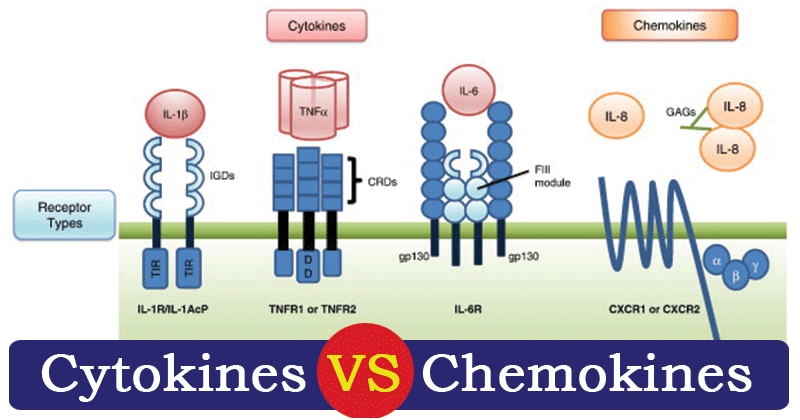Interesting Science Videos
Differences between Cytokines and Chemokines

Here are some differences:
|
S.N. |
Characteristics | Cytokines |
Chemokines |
| 1. | Definition | Small proteins produced dominantly by immune cells which are important in cell signaling. | Specific cytokines that are specially adapted for chemotaxis of cells. |
| 2. | Description | A broad family of chemical messengers serving to bring about the immune response. | They are chemotactic cytokines. |
| 3. | Size | ~5–20 kDa | ~ 8-10 kDa |
| 4. | Classification | Cytokines include chemokines, interferon, interleukins, lymphokines, and tumor necrosis factor. | Chemokines have been classified into four main subfamilies: CXC, CC, CX3C, and XC. |
| 5. | Involvement in immunity | Involved in both humoral and cell-mediated immunity. | Involved only in directing cells of the immune system to a target site. |
| 6. | Functions | Help in signaling molecules that mediate and regulate immunity, inflammation, and hematopoiesis.
They are also critical controllers of the cell, and hence tissue, growth, migration, development, and differentiation. |
Direct the migration of white blood cells to infected or damaged tissues i.e. guide cell movement towards a target location.
They are implicated in both immunological reactions and in the homeostasis of the immune system. |
| 7. | Importance | Serves a regulatory role (acts like messengers) in the immune system. The healing process following the resolution of infection is mediated by cytokines. | It helps to ensure that the infection does not spread to other parts of the body from the origin or site of detection. |
| 8. | Examples | IL-1,6,12, IFN-a, TNFα, IFN-γ etc. | monocyte chemoattractant protein-1 (MCP-1 or CCL2), CCL1, CCL15, CCL21, CXCR1-7, XCL1 etc. |
